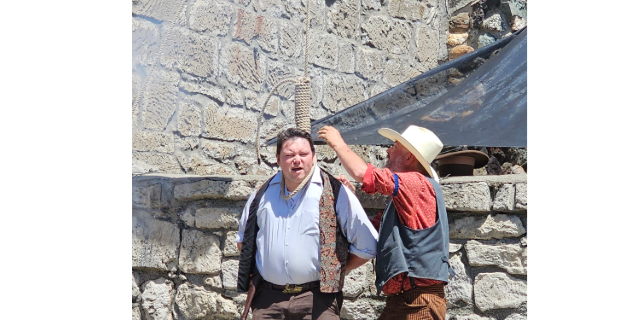On the alert for SUPERBUGs
Published 5:00 pm Monday, March 26, 2012

- <p>This foot abscess was caused by methicillin-resistant Staphylococcus aureus, known by the acronym MRSA. Medical help should be sought for "spider bite" looking afflictions, said several medical professionals at a March 14 MRSA public forum.</p>
JOHN DAY MRSA short for methicillin-resistant Staphylococcus aureus is a serious staph infection thats resistant to antibiotics normally used to treat them.
If left untreated, it can be life-threatening, invading the bodys internal respiratory or circulatory systems.
MRSA is tougher to fight than many things, said Tim Nielson of the Grant County Health Department. Nielson, who has a doctorate in nursing practices, noted that its a super bug.
Last year, there were 17 known cases of MRSA in Grant County. Five cases have been seen so far in 2012.
On a nationwide basis, the number is declining, Nielson said.
Even so, local health officials feel the risks merit public attention. They held a public forum March 14 at Grant Union High School to share information about MRSA and its prevention.
About 25-20 percent of all people normally have staph present on their skin, usually in the nose; approximately 1 percent carry MRSA, said Nielson.
MRSA is spread by direct contact with another persons infection, through sharing of personal items such as towels or razors, or by touching surfaces or materials such as used bandages that are contaminated with MRSA.
The strain usually enters the body through cuts or scrapes. Even microabrasions from shaving can be susceptible.
Most staph skin infections, including MRSA, appear as a bump or infected area that may be red, swollen, painful, warm to the touch, full of pus or other drainage, and accompanied by a fever, said Shawna Clark, family nurse pracitioner at the Strawberry Wilderness Community Clinic.
She said MRSA infections often start out looking like spider bites.
Clark urges people who suspect MRSA not pop or squeeze the lesions, but to keep them covered. Its also important to seek early medical attention, and to follow all orders of medical professionals including taking all prescribed antibiotics, she noted.
Health professionals also stress prevention.
The No. 1 thing we can do to protect ourselves and our family members is hand washing, said Marsha Delaney, a registered nurse at Blue Mountain Hospital.
She and others offer this advice:
Wash your hand frequently, using pump soaps and paper towels.
When hand-washing isnt an option, and hands arent visibly soiled, use 62 percent alcohol hand sanitizers.
Use gloves when removing dressings; put them in tied plastic bags for disposal.
Clean household surfaces and then sanitize them with bleach, following manufacturers directions.
Dont share towels, clothing, razors and other personal hygiene items.
Keep wounds covered and dry.
Bathe regularly and keep the home environment clean.
People are most susceptible to MRSA when they live in crowded situations, participate in contact sports, or have family members with MRSA, said Clark.
Other risk factors include recurrent skin infections, recurrent use of antibiotics, and skin trauma.
Athletes should exercise care, and if diagnosed, report their status to their school athletic director, Delaney noted.
Shared athletic equipment, such as wrestling mats, should be disinfected.
At the forum, a mother shared the story of her son, who contracted MRSA. It first began with an affliction that resembled a spider bite, she said.
Other pus-filled blisters emerged. The staph infection eventually affected other systems in his body.
With intensive medical treatment, he has been free of MRSA for eight months.
He continues to take numerous daily precautions, including swabbing of his nose.
A 10:1 bleach solution is part of his everyday routine, she said. This has been very difficult mentally, emotionally, physically and financially.





